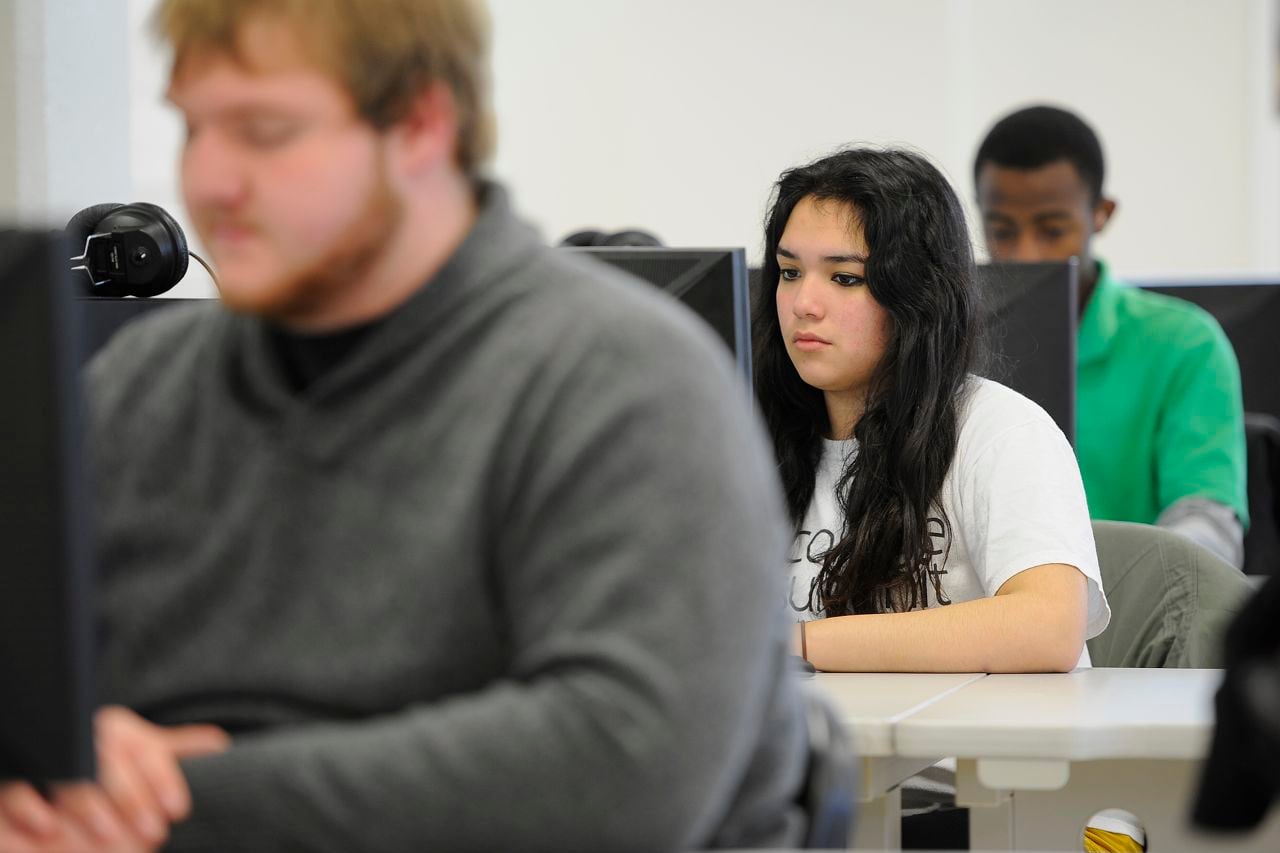Sign up for Chalkbeat Colorado’s free daily newsletter to get the latest reporting from us, plus curated news from other Colorado outlets, delivered to your inbox.
While younger Colorado students have now surpassed pre-pandemic scores on the state’s standardized math tests, the math scores of students in most other grades still lag behind, according to results from spring 2024 tests released Tuesday.
In literacy, most of the state’s students are still not scoring as high as they did before the pandemic shuttered school buildings, though they are catching up.
But as in previous years, some student groups continue to struggle more than others, including students who are still learning English as a new language.
The data released Tuesday were average test scores encompassing all students statewide. School and district level scores won’t be released until next week.
“We are encouraged by the continued improvement of our students since the pandemic disrupted learning,” said Colorado Education Commissioner Susana Córdova. “We continue, however, to see troubling and persistent achievement gaps across student groups. It is not enough to see growth for some Colorado students — we need to ensure that every child is getting the support they need to be successful.”
In Colorado, students in third through eighth grades take the math and English language arts CMAS, or the Colorado Measures of Academic Success test. In high school, students in ninth through 11th grade take a PSAT/SAT test to evaluate English and math. Students also take a science CMAS test in fifth, eighth, and 11th grade.
Among the bright spots are the CMAS scores for math. Students in elementary grades now have higher rates of meeting and exceeding expectations than students did in 2019, before the pandemic. These students were in preschool, kindergarten, and first grade as schools shut down in 2020 for the pandemic.
Among the middle school grades, rates of students who met or exceeded expectations aren’t yet higher than in 2019, but the rates have continued to improve each year at sixth and seventh grade, but not at eighth grade.
For high school students taking the new digital PSAT/SAT, the percentage of students meeting expectations on math tests fell significantly including up to a 7 percentage point drop for ninth grade students where just 39.5% met expectations this year, down from 46.5% just last year.
Part of the reason may be a new digital format for the SAT. The state had to do further analysis to ensure that the tests were still similar enough to previous years so that growth scores could be calculated. Ultimately, the state cautions that this year’s low math SAT scores are likely due at least in part to the new test format, but said it was still fair to calculate growth scores and use the test results in annual school quality ratings later this year.
Colorado has invested in math learning in the last couple of years using COVID relief funding. Among other work, the state offered a free math computer program for students in kindergarten through eighth grade and extended it in 2024-25, saying that 65% of schools were using the program.
When it comes to language arts tests, 42% of third graders met or exceeded state expectations, up from 39.9% last year, higher than the 41.3% who did in 2019. But the rate of fourth grade students meeting expectations on the CMAS language arts test dropped by 1.8 percentage points, the largest drop by grade level compared to last year.
Sixth, seventh and eighth graders all had slightly higher rates of students meeting expectations on language arts tests compared to 2023, and for sixth graders the improvement also now brings the rate to better than it was in 2019. In 2024, 44% of sixth graders met expectations on language arts tests, compared to 43.6% in 2019.
Gaps widen as some students struggle to recover
Similar to previous years, the largest test score gap was between fifth grade students who are learning English as a new language and those who are not.
This year, only 6.3% of multilingual fifth grade students met or exceeded expectations on the language arts test, compared to 52.6% of students who are not English learners — a gap of 46.3 percentage points. That’s a larger gap than the 45.7 percentage point gap in 2023, and in 2019, when 9.5% of multilingual students met or exceeded standards on the same test compared to 53.9% of students who aren’t English learners.
Last year, state officials were concerned about the lack of progress multilingual students and said they need support. But officials with the Colorado Department of Education also said the legislature would need to step in to pass a law to offer more academic support, and no such legislation passed.
In the most recent session, lawmakers did approve changes to the school funding formula that would give districts more money for the English learners they enroll starting this fall. For the 2023-24 school year, they approved special onetime funding for school districts that were receiving an influx of new students from out of the country, because many of students were arriving after the state’s official count day, which is used to calculate how much money schools get.
And although many of those students were English learners, schools said they needed the funds for basics in some cases like new desks in overcrowded classrooms or dedicated staff.
State officials also said in the spring that many of the new immigrant students would be exempt from taking these state tests under broader rules. Students who are identified as new to the country and have no or limited proficiency in English were already exempt from taking standardized English reading and writing tests for at least their first year of school. But this year, the state also exempted some of them from taking the math or science tests.
Colorado allows some third and fourth graders to take the language arts test in Spanish, but migrant students were only eligible to do so if they did not have a record of interrupted schooling.
This spring 17.2% of third graders who took the Spanish language arts test met or exceeded expectations, down from 18.7% who did last year and down from 27.5% in 2019.
Cynthia Trinidad-Sheahan, an advocate and advisor with the Colorado Association for Bilingual Education, said that administrators and many of the educators working with multilingual students continue to be underprepared to support the students and help them make gains.
“Districts and the state are still not doing enough,” she said.
Looking at Colorado’s growth calculations, which compare student test scores to peers with similar test history, almost all students of color had growth scores below 50. Generally, state officials say that students who are behind need a growth score of more than 50 to make progress.
Students with disabilities, migrant students, and Black students taking English language arts tests had some of the lowest growth scores this year of 46 or lower. White students had an average growth score of 52 on math and on language arts.
In many areas, the state now sees growth scores returning to what they were before the pandemic began, but now the key is to maintain or continue improving growth “to rebound fully,” according to the state press release.
Yesenia Robles is a reporter for Chalkbeat Colorado covering K-12 school districts and multilingual education. Contact Yesenia at yrobles@chalkbeat.org.






